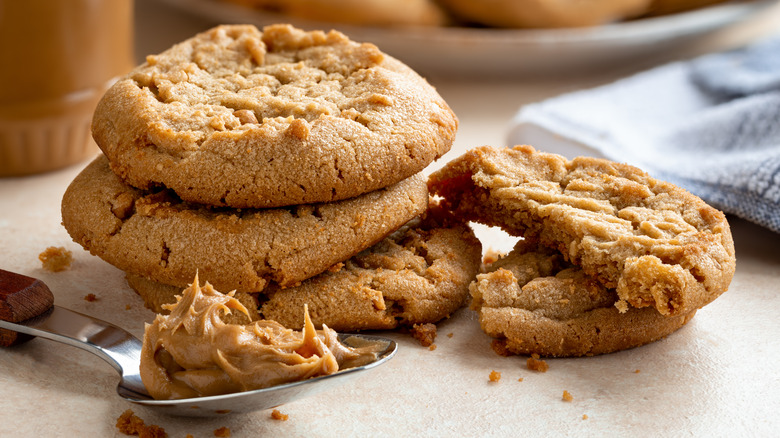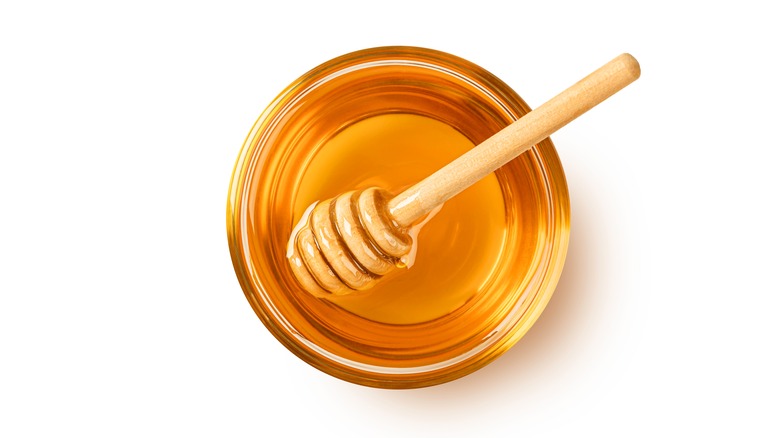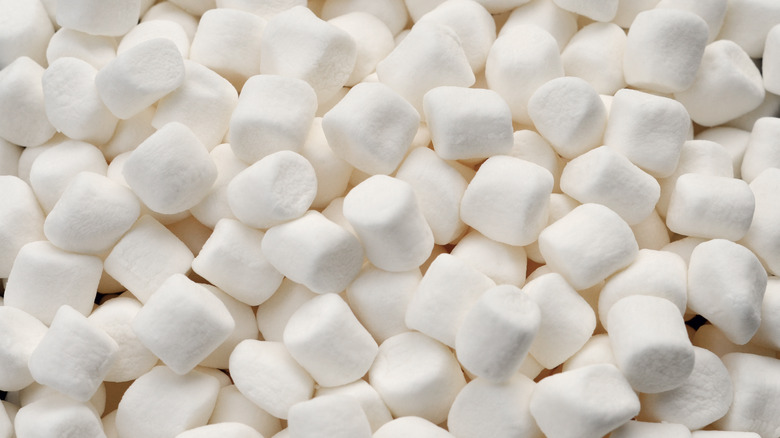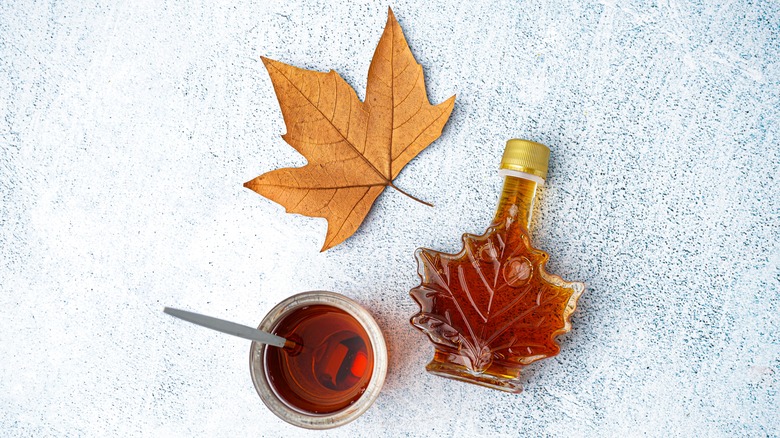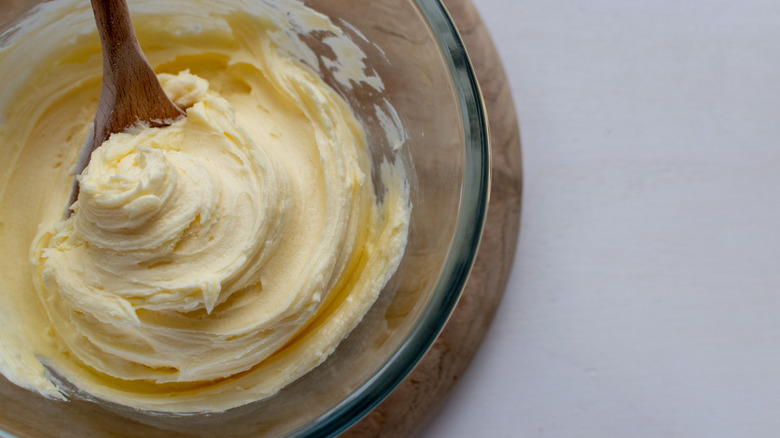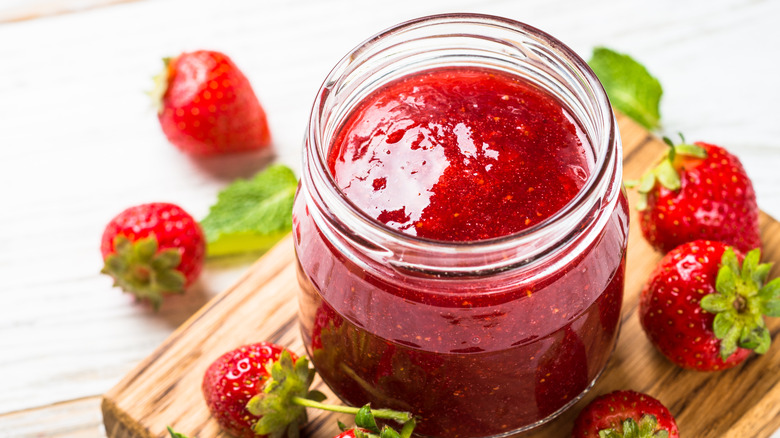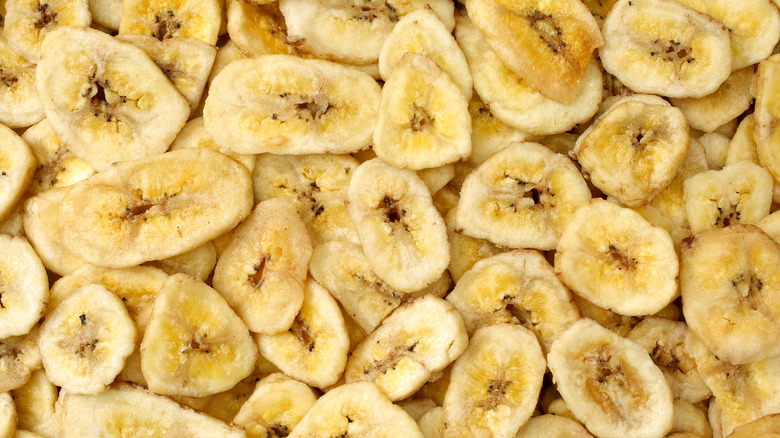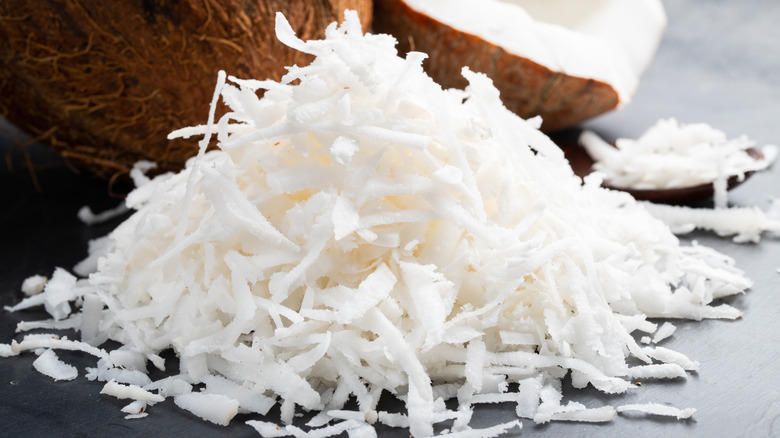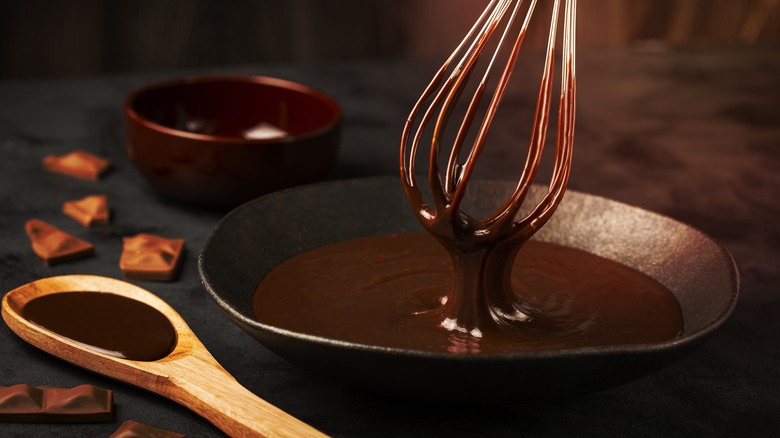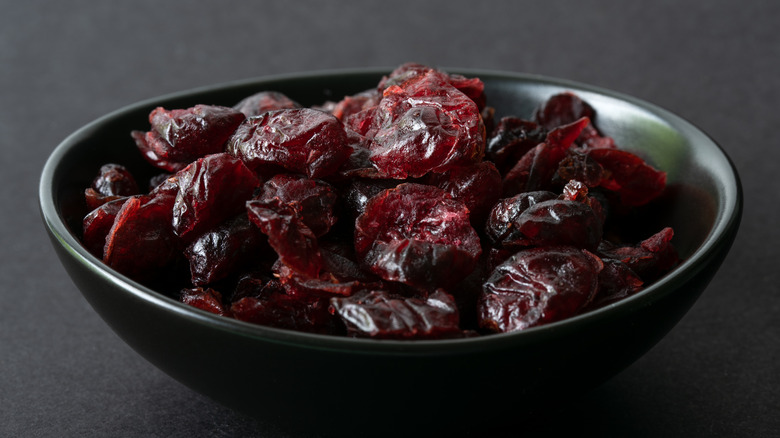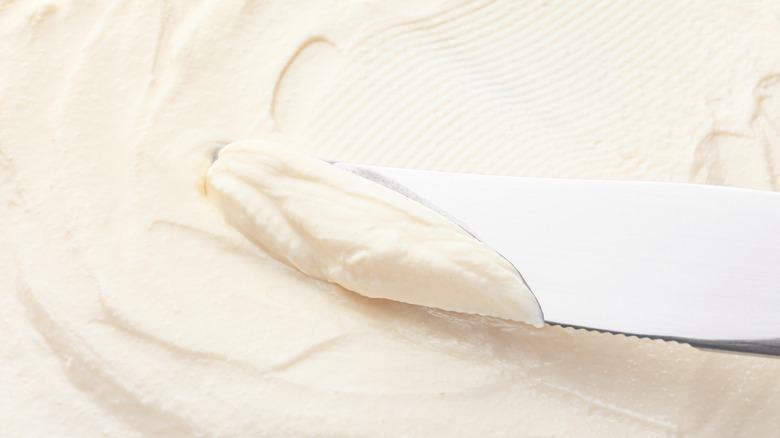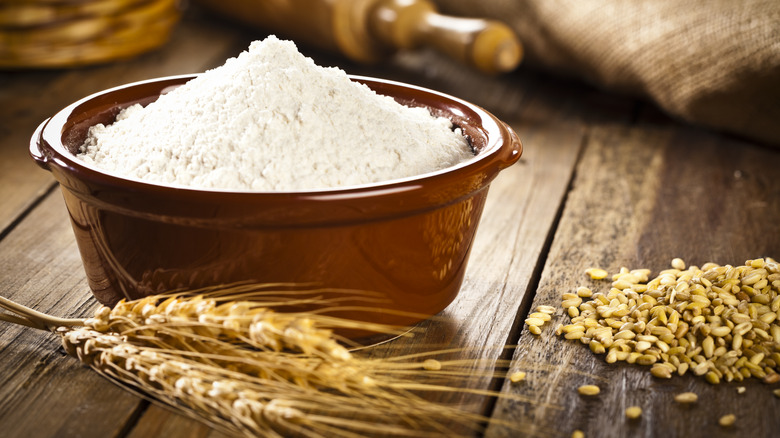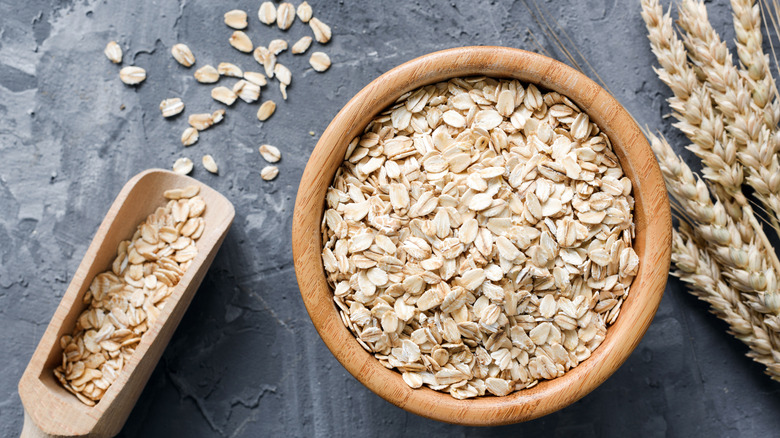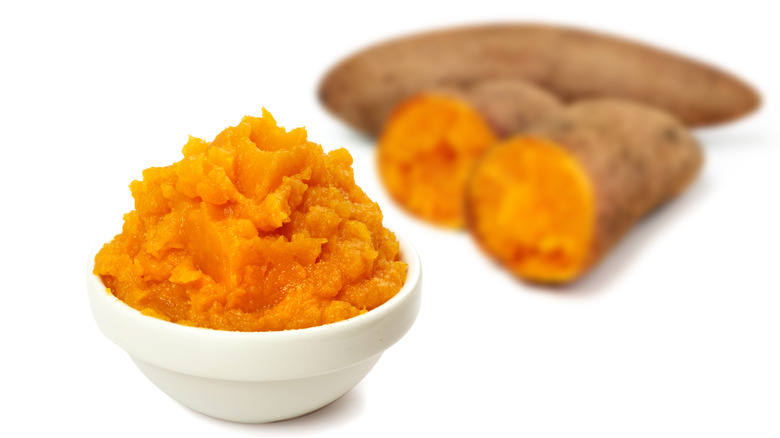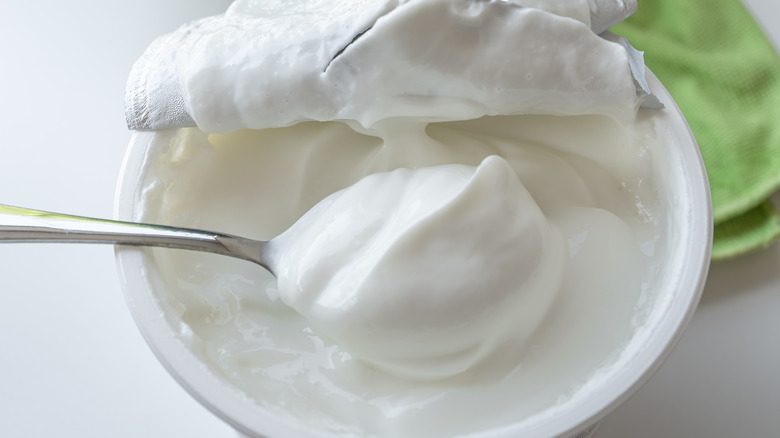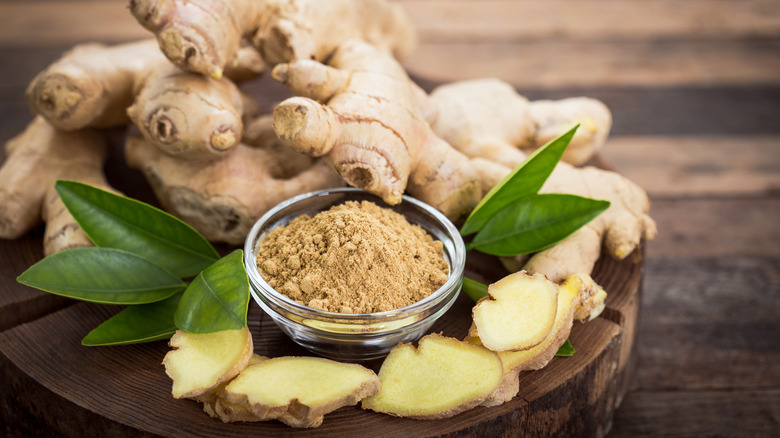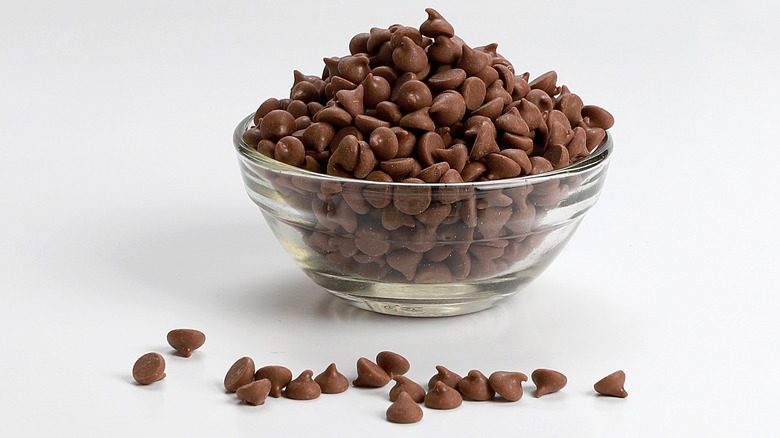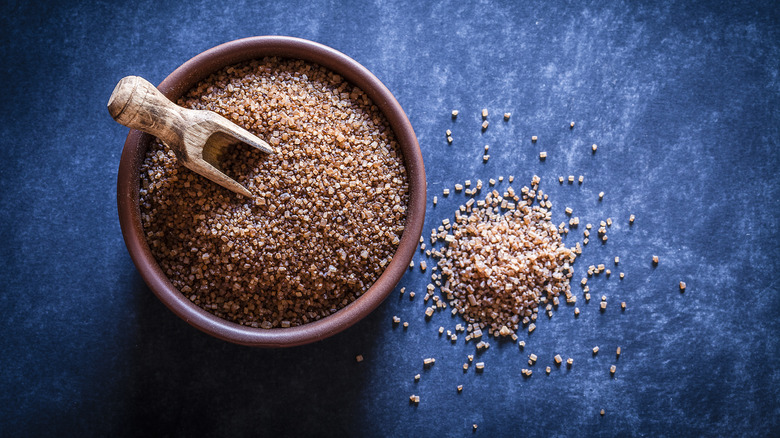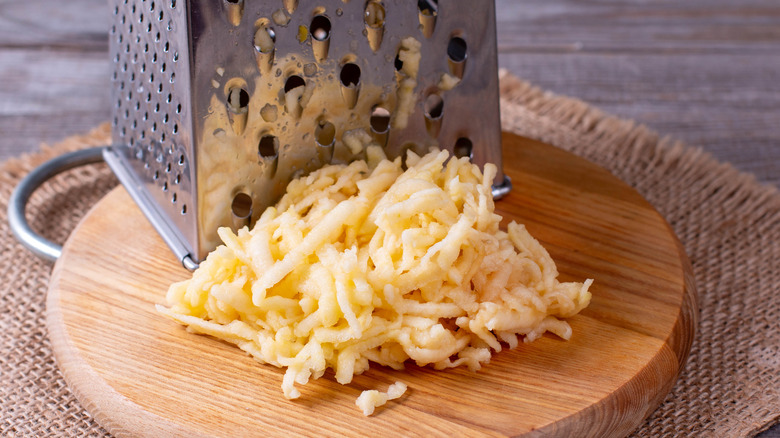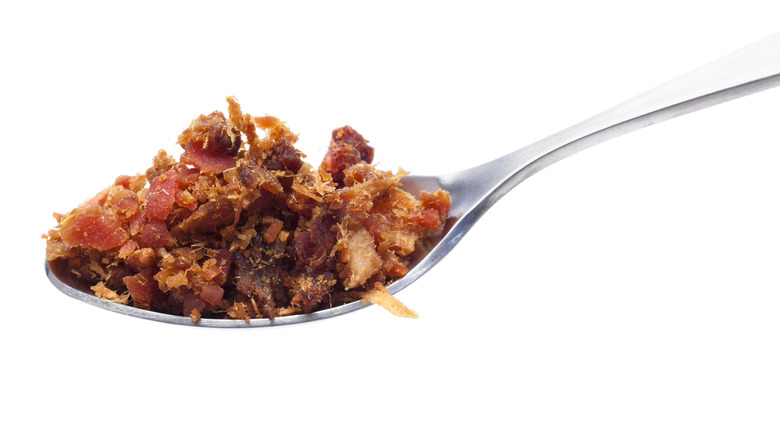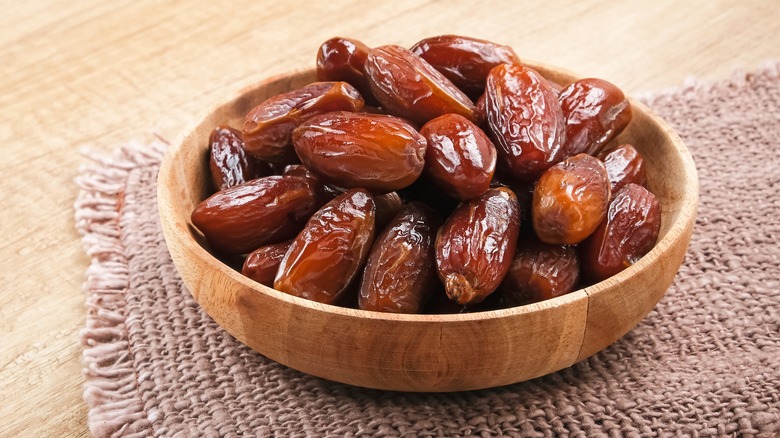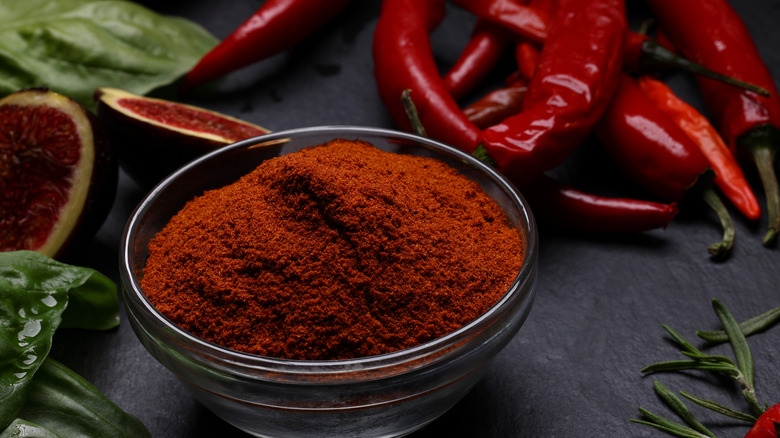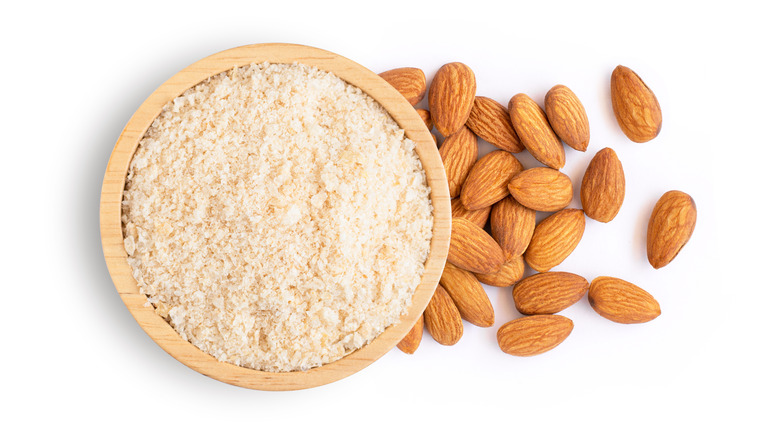22 Ingredients That Will Upgrade Peanut Butter Cookies
Something might be missing from your peanut butter cookies. And we're not talking about the classic crisscross pattern or the sugar in which you can roll them in. But rather, you might be leaving out ingredients that can take them to the next level. Of course, these types of cookies are scrumptious in their most basic form. They have a delicious, rich, and nutty flavor. Not to mention, sometimes they can be chewy, cakey, or crunchy, depending on the recipe. But it's never too late to modify the basic formula into something more remarkable.
For example, add a garnish to make them more visually appealing. A drizzle of ganache or fluffy frosting on top can never hurt. Or choose mix-ins that provide additional texture, such as crunchy banana chips or chewy dates. These ideas are both flavorful and easy to execute. So, you can craft your new signature cookie or make an entirely new creation every time.
1. Honey
Use honey as an addition to the dough or as a finishing touch. Honey and peanut butter are complementary ingredients. So, when you pair them, the cookies have a delectable balance of nuttiness and sweetness. If you want the honey flavor to shine, consider omitting sugar from the recipe and using honey as the primary sweetener. You only need ½ cup to ⅔ cup of honey for every 1 cup of sugar the recipe calls for. Otherwise, the cookies might be overly saccharine.
If you would instead use honey for decorative purposes, make a glaze by mixing it with milk and powdered sugar. You only need a splash of milk. Sift the powdered sugar in advance to prevent lumps, and slowly add it until a glaze forms. Once the cookies cool, drizzle them with the homemade glaze to elevate their presentation.
2. Marshmallows
You can use marshmallows in more than one way for decadent peanut butter cookies. First, throw some mini marshmallows into the batter. If you add them too soon, you might accidentally break them, so fold them in last before you scoop the dough. It's up to you how much you want to add; this is an easy inclusion that doesn't require measuring.
Another option is to use larger ones and make peanut butter cup s'mores cookies. To do so, bake regular peanut butter cookies for 10 to 12 minutes. While they're in the oven, cut the full-sized marshmallows in half. Temporarily remove the cookies from the oven, add the marshmallows on top, and return them to the oven until the marshmallows toast. Lastly, press a peanut butter cup candy into the softened marshmallow. Now you have s'mores in an entirely new form.
3. Maple syrup
You can use maple similarly to honey in peanut butter cookies. However, maple isn't quite as sweet. So, when you swap it for sugar in the recipe, use ¾ cup of maple syrup for every 1 cup of sugar. Pure maple syrup has caramel-like notes, so it's delicious with the peanut butter flavor. It also benefits the baked good because it produces a soft crumb.
You can also make an icing with melted butter, powdered sugar, and syrup if you want a more delicate maple flavor. First, mix the liquids until smooth. Then, add the sugar until it is thick enough to smear on the cookies with a spoon.
4. Buttercream frosting
There isn't a cookie that doesn't like to be frosted (especially a rich peanut butter one). Buttercream is a superior option whether you want to make the baked goods fancier or give them more flavor. It's perfectly creamy, and you can use a piping tip to make beautiful designs with it.
It's easy to make classic buttercream at home because you only need a few ingredients. First, cream the butter until it's light and airy before slowly adding powdered sugar until it is a spreadable consistency. Then, add a pinch of salt, optional baking extracts, or mix-ins.
For example, make chocolate, vanilla, or butterscotch-flavored frosting. Or use food coloring or sprinkles to give the sweet treats a whimsical upgrade. On the other hand, if you don't have time, you can buy premade frosting at the store for the occasion, and it works just as well.
5. Jelly or jam
There's no denying that peanut butter and jelly are a dynamic duo. You can recreate the nostalgic flavor of a classic PB&J when you include some jelly (or jam) in your cookie recipe. An easy way to do so? Make the dough as usual, then scoop it onto a lined baking sheet. Grab your favorite jelly and place a small amount on top. Use a toothpick to make a swirl design with the jelly.
Alternatively, after you scoop the cookies, use your thumb to press an indent in the center of the dough ball, making a well for a dollop of jam to reside in. Both versions of the cookie taste impressive. It just comes down to how you want it to look. You can also make PB&J sandwich cookies by baking the cookies and then putting two of them together with some jam in between.
6. Banana chips
If you're a fan of the beloved peanut butter and banana combination, you should try this mix-in idea. Instead of adding mashed banana to the dough, you can use banana chip pieces to supply a sweet and fruity taste and a crunchy texture. Make the chips yourself or purchase them at the grocery store.
Chop them into smaller pieces before adding them to the mixture. You can also use them as a garnish. First, frost the cookies so the banana pieces have something to adhere to. Crush and sprinkle them on, or place an entire chip on top for decoration.
7. Shredded coconut
Coconut not only pairs with peanut butter but also enhances the overall texture of the cookie. This add-in is flexible since you can use either raw or toasted coconut. You don't need to measure how much to use. Just eyeball the amount you want to add to the batter. If you use it straight from the bag, it has more of a stringy texture. Meanwhile, the toasted version has some crunch and a deeper flavor.
Believe it or not, you can use your microwave to toast coconut. You just have to be careful since it easily burns. To try this method, spread the coconut shreds on a microwave-safe dish and cook it using 30-second intervals, stirring between cooking times. Before you know it, you'll have golden brown pieces to add to your cookie dough.
8. Ganache
You'll never be disappointed when you use ganache to decorate your cookies. This ingredient is used when you want a more luxurious baked good. Since it doesn't take long to make, you can prepare it while the cookies cool. You only need heavy cream and chocolate pieces (some people use equal portions, and others use slightly more cream).
Gently heat the cream in a saucepot until it reaches a simmer, then pour it over the chocolate. Allow it to sit for a few minutes, and then stir the two components until a silky glaze forms. When you make it correctly, ganache sets into a fudgy consistency. You can put it into a piping bag and drizzle lines on the cookies. Or, you can place the ganache in a bowl and dip the treats to partially coat them.
9. Dried cherries
Many types of dried fruit taste divine in a peanut butter cookie, and dried cherries are among the top choices. Their sweet yet tart taste and firm texture take a basic cookie and make it much more sophisticated. Dicing the cherries into smaller pieces is the only necessary preparation.
Soaking them beforehand to hydrate them is optional and depends on your preference. If you want them plumper, you can surely soak them for about 30 minutes in warm water before you add them to the dough. Nevertheless, they still taste great and have a chewy texture if you use them as-is.
10. Cream cheese
Cream cheese can be a tangy addition that contrasts with the nutty taste of the cookies. For instance, make a cream cheese frosting to spread on the baked goods once they're cool. All you need to do is whip equal parts butter and cream cheese (about ½ cup each) and then slowly add powdered sugar until it reaches the desired thickness. A dash of salt and vanilla extract can deepen its flavor.
Another way to include this ingredient is to put it in the batter. Use full-fat cream cheese and replace half of the butter with it. For best results, soften it first, so it effortlessly blends into the other ingredients and doesn't create lumps.
11. Whole wheat flour
The earthy taste and hearty texture of whole wheat flour can enhance the already delicious qualities of peanut butter. This is a simple ingredient if you want to make your cookies have a unique appeal. However, this product can lead to baked goods that are unpleasantly dense, so be careful how much you use.
To be safe, use primarily all-purpose flour; substitute ¼ or ⅓ of the required amount with whole wheat flour. This scenario would also be an excellent time to use crunchy peanut butter for the recipe. When you bite into the finished product, it has various textures that work together to create a genuinely well-made dessert.
12. Oats
Adding oats to the batter can work wonders if you like your cookies to be nice and chewy. Opt for the old-fashioned (rolled) oats when choosing which type to use. Generally, instant oats don't hold their shape as well, leading to a mushy batter.
With the old-fashioned kind, the cookies have a nice bite and a charming rustic look with defined oat pieces. If you can't find a specific recipe that uses them, you can create one yourself. Substitute half the amount of flour for oats. If you add oats without adjusting the dry ingredients, it throws off the ratio, and the cookies don't turn out right. This swap doesn't always work in other recipes, but peanut butter's sticky texture helps hold everything together, so you won't have any trouble.
13. Mashed sweet potato
Although it might seem like a bizarre inclusion at first thought, sweet potatoes are beneficial to peanut butter cookies for more than one reason. First, they provide moisture to the recipe, resulting in pillowy cookies. Secondly, their natural sweetness is an excellent match for the nut butter, and you can add baking spices to elevate the flavor even more.
Purchase canned sweet potato puree or make the mash at home. Of course, mashing them yourself takes some work, but the result is assuredly worth it. Adding about 2 tablespoons to the dough doesn't affect its texture too much. But if you want a more pronounced flavor, you can use the sweet potato to replace the eggs. Just use ¼ cup for each egg required.
14. Greek yogurt
Greek yogurt provides tanginess to baked goods in general. It is especially delicious when coupled with peanut butter because it makes it creamier. Also, the yogurt gives the cookie an extra protein lift, making it a perfect afternoon pick-me-up when you need some energy.
When using this ingredient, use full-fat, plain Greek yogurt. Let's say your recipe calls for 1 cup of butter. You can use half the butter and then supplement the rest with yogurt. Start with ¼ to ⅓ cup of yogurt because using the total amount might cause a runny batter. This product contains plenty of fat and moisture to compensate for the missing butter, so the cookies turn out incredibly light and fluffy.
15. Ginger
Use fresh or ground ginger to give your peanut butter cookies a flavor boost. When using the fresh ginger, mince or grate it before adding it to the cookie dough. Add 1 to 2 tablespoons and fold it in last. It is fibrous, so you don't want large chunks swimming in the dough. On the other hand, thin strands supply a pleasant, tender texture and spicy, earthy undertone to the baked good.
Meanwhile, ground ginger creates a cross between a gingersnap and a classic peanut butter cookie, especially if you add other spices like cinnamon and cloves. Remember that ground ginger is much stronger than fresh stuff; you only need 1 to 2 teaspoons for a whole batch. Whichever way you use the ginger, it isn't enough to significantly alter the consistency of the dough. So, you don't need to adjust any other ingredient measurements.
16. Chocolate chips or chunks
Here's an idea that you might've seen coming. But hey, it's not our fault that peanut butter and chocolate are such a powerful pair. Adding chocolate chips or chunks to the dough creates a sweet treat that might remind you of Reese's peanut butter cups.
It's also a low-effort way to improve the dessert because all you need to do is open a bag of chocolate chips and dump it into the batter. Add it last and carefully fold it with a rubber spatula to keep the chips intact. Mixing the chips with an electric mixer can break them.
When you make chunky peanut butter chocolate chip cookies, add about 1 cup of chocolate per batch of one dozen cookies. Depending on your preferences, you can use semi-sweet, milk, or dark chocolate.
17. Turbinado sugar
Turbinado sugar has qualities that set it apart from other types of sugar. You can use these qualities to your advantage when making peanut butter cookies. For instance, it has a light brown hue but isn't soft like standard brown sugar. Its granules are crunchy and shaped like tiny gems, and they almost taste like caramel.
Instead of adding it to the dough, sprinkle it onto the cookies before baking them since it is best used for decorative purposes. Or, you can go the extra mile by rolling the dough balls into the sugar to coat their entire exterior. When you bite into the soft cookie, you're met with sweet and crunchy crystals.
18. Grated apple
Here's an ingredient idea for those who enjoy dipping apple slices into peanut butter. You can add apples to the cookie dough — the natural sweetness of the fruit pairs exceptionally well with the smooth and toasty nut butter. Another bonus is that the apples make the cookies extra moist.
A clever way to use this ingredient is first using a cheese grater to turn the fruit into shreds. Be careful not to include the core or any seeds. When you make tiny strands, they evenly distribute throughout the dough. This is more beneficial than using diced cubes because you might only have a few pieces in each cookie that way.
19. Bacon
Just hear us out before you dismiss the idea of adding meat to your cookies. Peanut butter and bacon are one of those weird combinations that just work. Maybe the smokiness of the bacon brings out the toasty notes in the nut butter. Or, perhaps, it's the contrast of sweetness and saltiness. Whatever it is, cookies with bacon are an irresistible treat. There are a couple of ways to execute this concept.
For the first option, cook the bacon and drain any excess grease. Chop it into pieces about the size of chocolate chunks. Fold it into the dough as the last ingredient. Another option is to make bacon-wrapped cookies. Make the dough balls, then fold a slice of uncooked bacon around each one. Place the seam side of the meat onto the baking sheet. Bake the cookies until the bacon is done, and the cookies are golden brown.
20. Dates
The sweetness of a date just belongs in a peanut butter-packed cookie. Dates are pleasantly saccharine and have a chewy texture, which can be a nice surprise. To use this ingredient, you can make it easy on yourself and purchase pitted dates. Specifically, Deglet Noor dates are fantastic for baking. They have the right balance of softness and firmness.
However, if you try to chop them in a food processor, they tend to get sticky. It's best to dice them by hand or freeze them for about 10 minutes before you run them through an appliance. Once you make small pieces, add as much or as little as you wish to the dough before scooping it.
21. Cayenne pepper
Adding this component to your dough tastes similar to spicy peanuts, except with more sugar involved. Talk about a complex flavor profile — sweet, spicy, and salty undertones wrapped into one cookie. Instead of working with fresh peppers, take the convenient route and use the ground spice.
Since cayenne pepper is bold, you only need about 1 teaspoon per batch to get the job done. The heat becomes secondary with this amount, and the peanut butter still takes charge. For best results, sift it into the dry ingredients so it gets evenly dispersed throughout the batter. The last thing you want is for someone to take a bite of the cookie and get a mouthful of cayenne.
22. Almond flour
If you've never worked with almond flour, peanut butter cookies are a perfect way to try it out. It might go without saying, but almonds and peanuts are a lovely pairing in terms of taste. Moreover, almond flour has a unique, coarse texture that can make the cookies heartier. It also just happens to be gluten-free, which can benefit those who need to avoid traditional flours like all-purpose.
Although swapping almond flour for another type can be tricky in other recipes, it's easier with peanut butter cookies. Usually, the crumbly nature of almond flour might lead to cookies that don't have enough structure. However, since the nut butter is a terrific binder, it prevents the cookies from falling apart. So, it is acceptable to substitute the flours at a one-to-one ratio.
